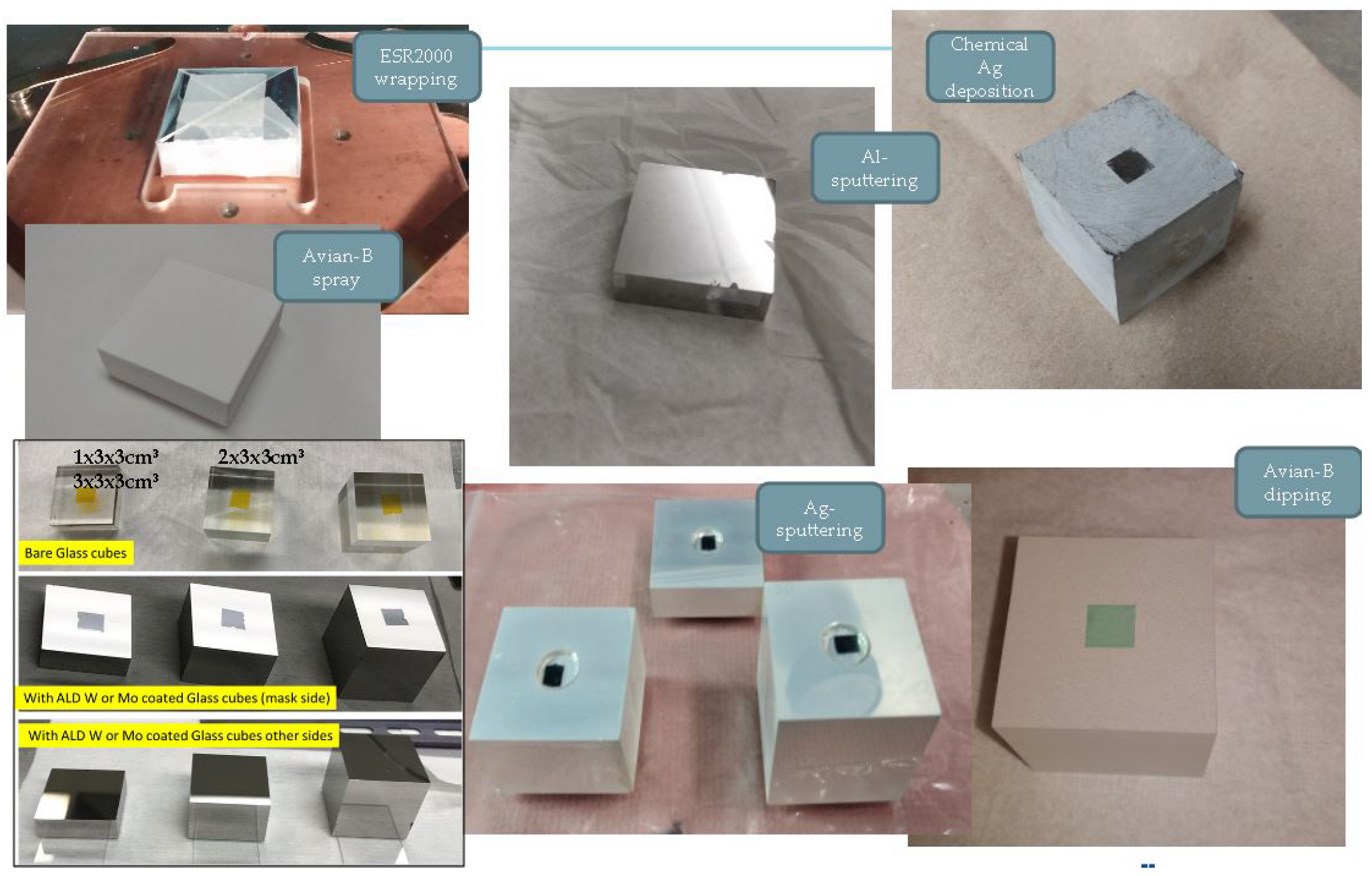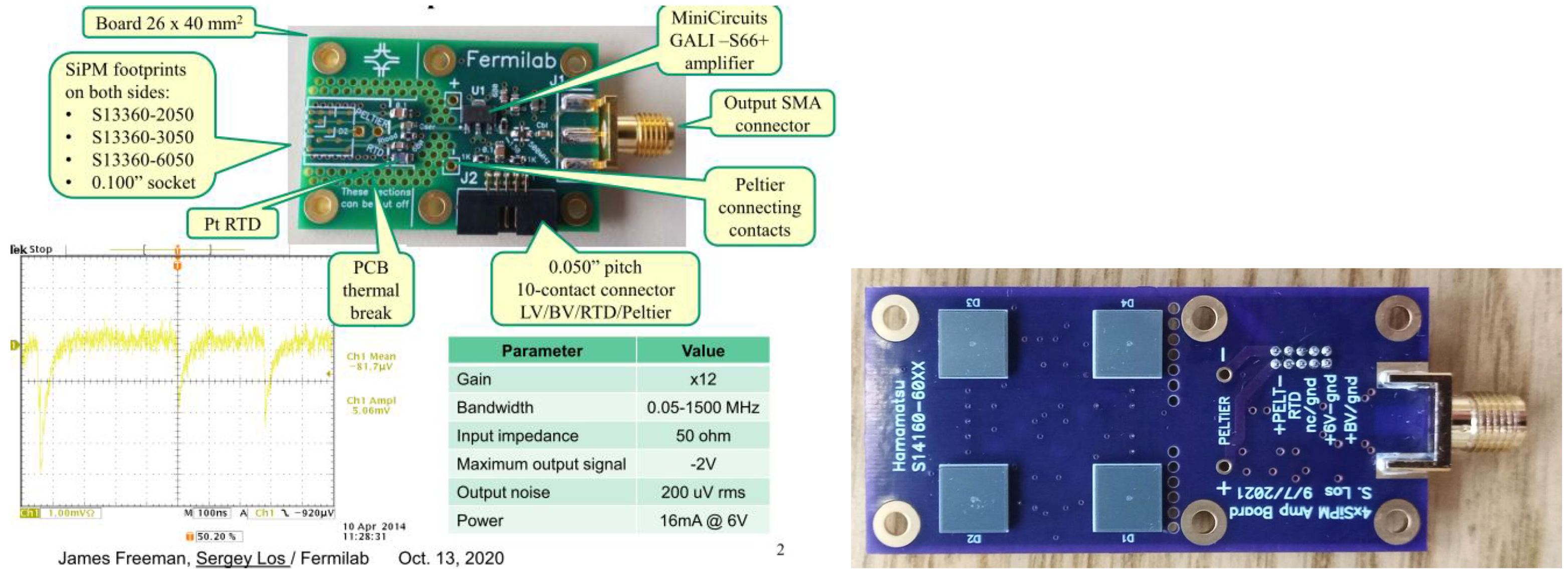Preliminary Results from ADRIANO2 Test Beams
Abstract
1. Introduction
2. Description of Techniques
3. ADRIANO2 Readout System
4. Preliminary Results and Discussion
4.1. Light Yield Measurements
4.2. Timing Measurements
5. Conclusions
Author Contributions
Funding
Data Availability Statement
Acknowledgments
Conflicts of Interest
References
- Available online: http://www.linearcollider.org/clic-study.web.cern.ch/clic-study/ (accessed on 4 September 2022).
- Buontempo, S.; Capone, A.; Cocco, A.G.; De Pedis, D.; Di Capua, E.; Dore, U.; Ereditato, A.; Ferroni, M.; Fiorillo, G.; Loverre, P.F.; et al. Construction and test of calorimeter modules for the CHORUS experiment. Nucl. Instr. and Meth. A 1994, 349, 250. [Google Scholar] [CrossRef][Green Version]
- Section on Calorimetry. Available online: https://journals.aps.org/rmp/abstract/10.1103/RevModPhys.90.025002 (accessed on 4 September 2022).
- Available online: https://www.sciencedirect.com/science/article/abs/pii/016890029190062U?via%3Dihub (accessed on 4 September 2022).
- Wigmans, R. Calorimetry energy measurement in particle physics. In International Series of Monographs on Physics; Oxford University Press: Oxford, UK, 2000; Volume 107. [Google Scholar]
- Ziman, J.M. International Series of Monographs on Physics; Oxford University Press: Oxford, UK, 2000; Volume 107. [Google Scholar]
- Antonello, M.; Caccia, M.; Ferrari, R.; Gaudio, G.; Pezzotti, L.; Polesello, G.; Proserpio, E.; Santoro, R. Expected performance of the IDEA dual-readout fully projective fiber calorimeter. J. Instrum. 2020, 15, C06015. [Google Scholar] [CrossRef]
- Pezzotti, I.; Newman, H.; Freeman, J.; Hirschauer, J.; Ferrari, R.; Gaudio, G.; Polesello, G.; Santoro, R.; Lucchini, M.; Giagu, S.; et al. Dual-Readout Calorimetry for Future Experiments Probing Fundamental Physics. arXiv 2022, arXiv:2203.04312. [Google Scholar] [CrossRef]
- Gatto, C.; Di Benedetto, V.; Hahn, E.; Mazzacane, A. Status of Dual-readout R&D for a linear collider in T1015 Collaboration. arXiv 2016, arXiv:1603.00909. [Google Scholar]
- Gatto, C.; Di Benedetto, V.; Mazzacane, A.; T1015 Collaboration. Status of ADRIANO R&D in T1015 collaboration. J. Phys. Conf. Ser. 2015, 587, 012060. [Google Scholar]
- Thomson, M.A. Particle flow calorimetry and the PandoraPFA algorithm. Nucl. Instrum. Meth. 2009, A611, 25. [Google Scholar] [CrossRef]
- Abu-Ajamieh, F.; Blazey, G.; Cole, S.; Dyshkant, A.; Hedin, D.; Johnson, E.; Viti, I.; Zutshi, V.; Ramberg, E.; Rivera, R.; et al. Beam tests of directly coupled scintillator tiles with MPPC readout. Nucl. Instrum. Meth. 2011, A659, 348–354. [Google Scholar] [CrossRef]
- Blazey, G.; Chakraborty, D.; Dyshkant, A.; Francis, K.; Hedin, D.; Hill, J.; Lima, G.; Powell, J.; Salcido, P.; Zutshi, V.; et al. Directly coupled tiles as elements of a scintillator calorimeter with MPPC readout. Nucl. Instrum. Meth. 2009, A605, 277–281. [Google Scholar] [CrossRef]
- Available online: https://www.euclidtechlabs.com/ (accessed on 4 September 2022).
- Available online: https://inspirehep.net/files/1957eb3a77c24d631f51040ad2f58fd7 (accessed on 4 September 2022).
- Available online: https://www.sciencedirect.com/science/article/pii/S0168900216308373?via%3Dihub (accessed on 4 September 2022).
- Breton, D.; Delagnes, E.; Maalmi, J.; Rusquart, P. The WaveCatcher family of SCA-based 12-bit 3.2-GS/s fast digitizers. In Proceedings of the 19th IEEE-NPSS Real Time Conference, Nara, Japan, 26–30 May 2014; pp. 1–8. [Google Scholar] [CrossRef]
- Belloni, A.; Chen, Y.M.; Dyshkant, A.; Edberg, T.K.; Eno, S.; Zutshi, V.; Freeman, J.; Krohn, M.; Lai, Y.; Lincoln, D.; et al. Test Beam Study of SiPM-on-Tile Configurations. arXiv 2021, arXiv:2102.08499. https://arxiv.org/abs/2102, 08499. [Google Scholar] [CrossRef]
- Janecek, M. Reflectivity Spectra for Commonly Used Reflectors. IEEE Trans. Nucl. Sci. 2012, 59, 490–497. [Google Scholar] [CrossRef]







Publisher’s Note: MDPI stays neutral with regard to jurisdictional claims in published maps and institutional affiliations. |
© 2022 by the authors. Licensee MDPI, Basel, Switzerland. This article is an open access article distributed under the terms and conditions of the Creative Commons Attribution (CC BY) license (https://creativecommons.org/licenses/by/4.0/).
Share and Cite
Gatto, C.; Blazey, G.C.; Dychkant, A.; Elam, J.W.; Figora, M.; Fletcher, T.; Francis, K.; Liu, A.; Los, S.; Mahieu, C.L.; et al. Preliminary Results from ADRIANO2 Test Beams. Instruments 2022, 6, 49. https://doi.org/10.3390/instruments6040049
Gatto C, Blazey GC, Dychkant A, Elam JW, Figora M, Fletcher T, Francis K, Liu A, Los S, Mahieu CL, et al. Preliminary Results from ADRIANO2 Test Beams. Instruments. 2022; 6(4):49. https://doi.org/10.3390/instruments6040049
Chicago/Turabian StyleGatto, Corrado, Gerald C. Blazey, Alexandre Dychkant, Jeffrey W. Elam, Michael Figora, Todd Fletcher, Kurt Francis, Ao Liu, Sergey Los, Cole Le Mahieu, and et al. 2022. "Preliminary Results from ADRIANO2 Test Beams" Instruments 6, no. 4: 49. https://doi.org/10.3390/instruments6040049
APA StyleGatto, C., Blazey, G. C., Dychkant, A., Elam, J. W., Figora, M., Fletcher, T., Francis, K., Liu, A., Los, S., Mahieu, C. L., Mane, A. U., Marquez, J., Murray, M. J., Ramberg, E., Royon, C., Syphers, M. J., Young, R. W., & Zutshi, V. (2022). Preliminary Results from ADRIANO2 Test Beams. Instruments, 6(4), 49. https://doi.org/10.3390/instruments6040049






